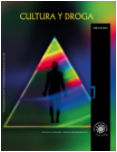Authors
Abstract
Objective. This article synthetizes a process of sound creation and interdisciplinary research whose purpose is to unite music, ancestral knowledge (especially AndeanAmazonian), bodywork and technological resources, proposing a process of inner transformation that makes possible the return to the ontological roots of the Americas through sound creation. Methodology. The article is based on the ritual experience and the meetings with the “knowers” of the Kamëntsá community of the upper and middle Putumayo, revealing with this search the importance of orality, the knowledge conceived from the action, and the recognition of the ancestral as a resource of vital importance for the conception of new paradigms. Results and conclusions. The importance of surrounding biological and cultural miscegenation, that redefine in the individual and the collective during the artistic process, was elucidated considering an emergent need to cross-link academic canons with concepts, shapes and structures of the traditional knowledge transmitted by the ancestors.
References
Chandre, H. y Echeverri, J.A. (1993). Tabaco frío, coca dulce. Recuperado de http://www.bdigital.unal.edu.co/2277/3/9789584445230.pdf.
Chia, M. y Li, J. (1996). La estructura interna del Tai Chi. Buenos Aires, Argentina: Editorial Sirio.
COICA. (2005). Agenda indígena amazónica: volviendo a la maloca. Quito, Ecuador: COICA.
Deshimaru, T. (1993). Zen y artes marciales. Barcelona, España: Editorial Humanitas.
Escobar, L.A. (1985). La música precolombina. Reconquista de América por los americanos. Recuperado de http://www.banrepcultural.org/blaavirtual/antropologia/musicprec/musicprec4.htm.
Fiori, L. y Monsalve, J. (1995). El baile del muñeco. Recuperado de http://www.banrepcultural.org/blaavirtual/folclor/baile/vida.htm#1.
Gaona, S. (2010). Consonancia y disonancia musical. Asunción, Uruguay: Offsercolor.
Giove, R. (1993). Acerca del “ICARO” o canto shamanico. Revista Takiwasi, 2, 7-27.
Lawlor, R. (1996). Geometría sagrada. Filosofía y práctica. Madrid, España: Editorial Debate.
Llamazares, A.M. (2011). Del reloj a la flor de loto. Crisis contemporánea y cambio de paradigmas. Buenos Aires, Argentina: Del Nuevo Extremo.
Llamazares, A.M. (2012). Repensar la oralidad desde la antropología de la consciencia. En Material de clases de la Cátedra Introducción a los Estudios Indoamericanos, Maestría sobre Diversidad Cultural, Universidad Nacional Tres de Febrero.
Llamazares, A.M. y Martínez Sarasola, C. (Ed.). (2004). El lenguaje de los dioses. Arte, chamanismo y cosmovisión indígena en Sudamérica. Buenos Aires, Argentina: Editorial Biblos.
Severi, C. (2010). El sendero y la voz. Una antropología de la memoria. Buenos Aires, Argentina: Editorial SB.
Narby, J. (1997). La serpiente cósmica, el ADN y los orígenes del saber. Lima, Perú: Takiwasi y Racimos de Ungurahui.
Velázquez, R. (1997). La concepción cosmogónica del cuerpo en algunas culturas aborígenes. En Schobinger, J. (Comp.). Shamanismo sudamericano (pp. 19-43). Buenos Aires, Argentina: Ediciones Continente.
Wilber, K. (Ed.). (1999). Los tres ojos del conocimiento. Barcelona, España: Editorial Kairós.

 PDF (Español)
PDF (Español)
 FLIP
FLIP

















